Your Cart is Empty
Terminals and connectors are used to either connect a cable to a device or to connect two or more cables together to form a circuit. These are essential and commonplace on all low voltage DC systems found in the automotive and marine spaces, however with such a wide range of styles and options it may be difficult to decide what terminals are best for different applications.
Below we will look at the different types of terminals, where they might be used on an electrical system and what crimping tools should be used to secure them to the cable.
Terminal colour coding:
These terminals have a covering of PVC that insulates the cable crimped inside. These terminals are ideal for low voltage wiring and connections, provide a more secure connection than uninsulated variants, and are ideal for both marine and automotive use. Like most terminals, these are colour coded to help identify which are suitable for your cable size.
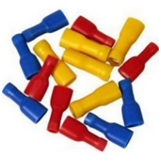
Heat shrink terminals are perfect when you require the most secure connection. By crimping the cable in place and then heating the insulation a secure bond is created.A heat gun is recommended for use with these terminals as it shrinks the insulation more evenly than a naked flame. These terminals are recommended for use in marine environments where a fully insulated connection is important to keep moisture out and reduce corrosion.
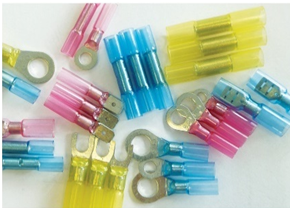
These terminals are often seen in cable sizes 10mm2 and up and designed to work with larger currents for battery leads and starter cable, whilst they are not colour coded like smaller terminal sizes the cable and hole size are printed on the front of the terminal. These are made with copper and coated in tin to protect against corrosion. Copper tube terminals are only usually available in ring terminal or butt connector variants.

The best way to crimp terminals and connectors is to use a dedicated crimping tool, these differ if the terminal is insulated, has heat shrink or is uninsulated, so using the correct tool is essential. Cable connectors such as Deutsch and Superseal may also require special crimping tools to ensure the terminal is secured properly.
Crimp tools are also available in ratchet or inexpensive light duty variants explained below.
Ratchet Crimp Tool
Ratchet crimp tools apply a consistent crimp pressure with each crimp, ensuring the best possible connection.

Economy Crimp Tool
Economy crimp tools are inexpensive and rely on hand pressure to provide a solid connection, most economy tools come with a wire stripper& cutter.
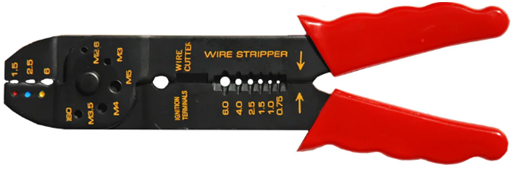
Photo in blue pre-insulated
Terminal type
Description

Used to connect two wires of the same size together.
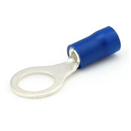
Used with screw down or nut and bolt connectors, offering more security than fork connectors. Available in a wide range of sizes from 3mm to 12mm.

Male type blade terminals can be used with female semi or fully insulated terminals (seen below). Also used with piggy-back terminals to create 3 way connections.

Used to connect to male blade terminals found on many devices such as fuse boxes, switches and relays.

A fully insulated variant of the female blade terminal, offering increased protection to the joint.
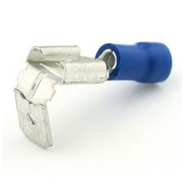
A combination of a male and female blade terminal that is used to create 3 way connections.

The male variant of the bullet terminal used to create a removable connection between two cables of the same size.

The female variant of the bullet terminal used to create a removable connection between two cables.

Used with screw down and nut and bolt terminals, available in sizes from 3mm – 6mm.
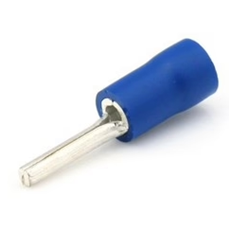
Used with screw terminals(choc blocks) to provide a better connection than stripped wire.